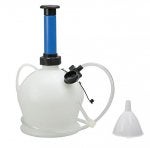Obviously the old way of sucking up gas in a tube is not the way to do it! How
do YOU remove the gas from the tank at the end of the season and NOT get the gasoline and its smell all over your hands and clothes?
I'm getting tired of pulling out the nitrile gloves and putting on full hazard gear,
then taking them all OFF before going inside. There must be a better way?
Recommendations?
do YOU remove the gas from the tank at the end of the season and NOT get the gasoline and its smell all over your hands and clothes?
I'm getting tired of pulling out the nitrile gloves and putting on full hazard gear,
then taking them all OFF before going inside. There must be a better way?
Recommendations?





